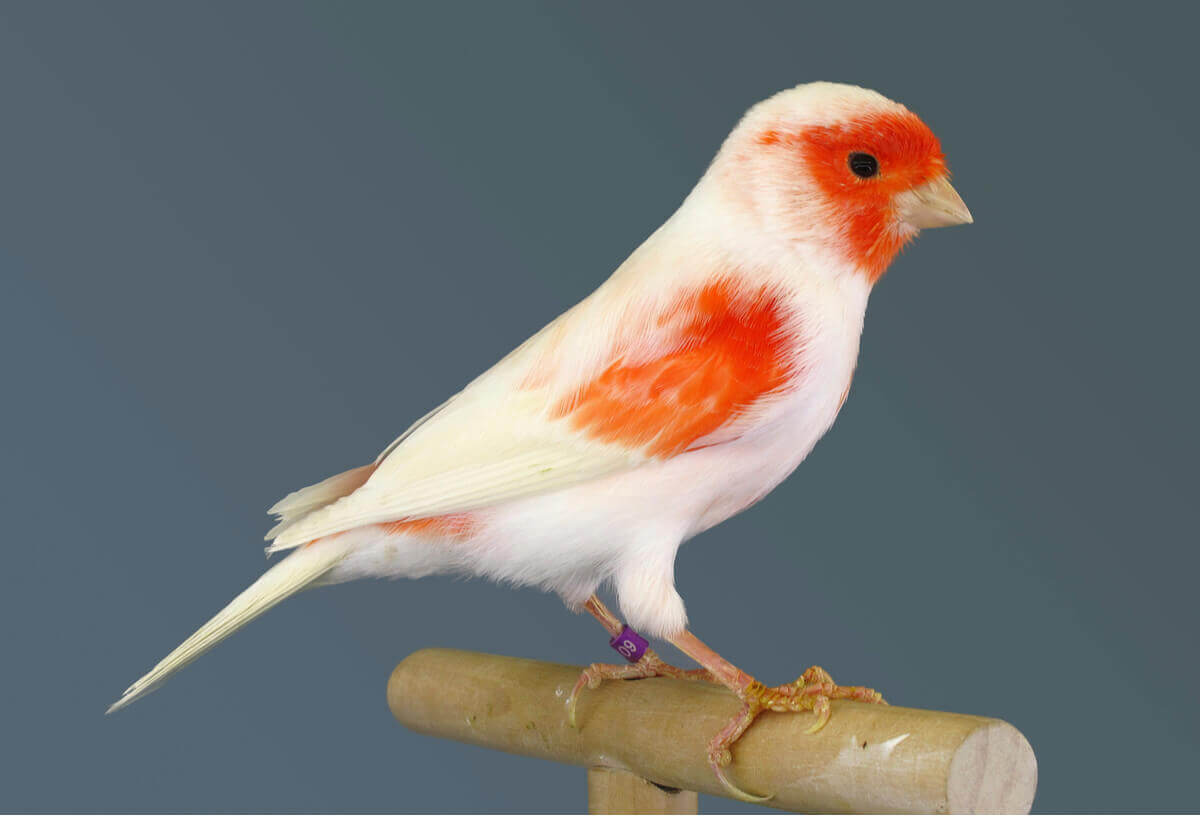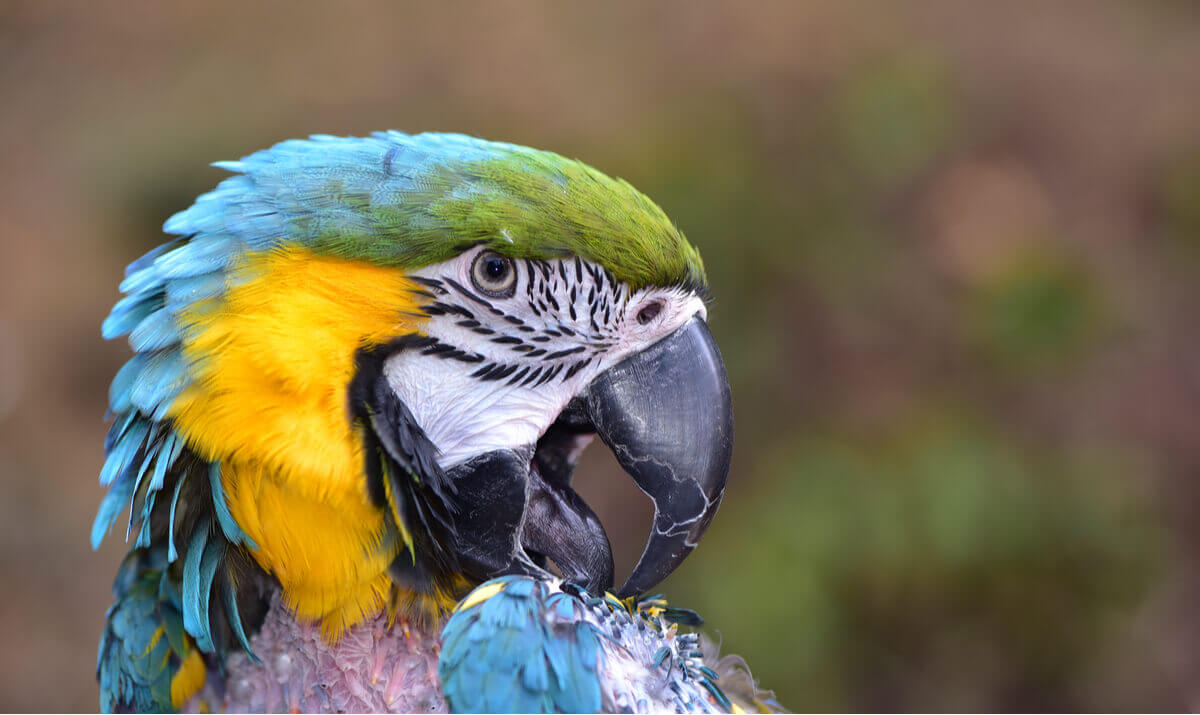8 Signs that a Bird's Going to Die


Written and verified by the biologist Samuel Sanchez
‘Birds color the skies with their vivid hues and songs, but like all animals on the planet, at some point, their time comes. Knowing the signs that a bird’s going to die is of great importance, as you may have to prepare to say goodbye to your pet or have to care for a bird that’s in serious condition at some point in your life.
Rather than monitoring the bird’s vital parameters in a critical situation, it’s best to look at its feathers, beak, respiratory rate, and many other more easily observable aspects. Read on if you want to know the signs that a bird’s going to die.
1. Feather fluffing
Birds that are about to die often fluff up their feathers. In their natural state, this behavior corresponds to one of the mechanisms of thermoregulation in birds. When they get too cold or too hot, they fluff up their feathers to a greater or lesser degree in order to insulate themselves from the environment or to dissipate their internal heat.
If your pet bird’s constantly puffed up and ruffling its feathers, it most likely has a severe, life-threatening infection. This doesn’t mean that the bird’s going to die immediately, but it will if it doesn’t receive proper veterinary care.
2. Poor feather condition
A bird’s feathers are a reflection of its health. This generality is literal in many ways, as females choose which males to reproduce with based on the colors of their plumage and ornaments. If a bird has bright, strong plumage, it’s safe to assume that it’s healthy.
On the other hand, a sick bird will have dull feathers, bald patches on its body, and epidermal lesions of varying severity. This usually indicates an external parasitic infection that requires immediate attention. If your bird is constantly shedding feathers, see your veterinarian.

3. Shivering
Shivering is another very effective thermoregulatory mechanism in animals. When a bird has a very low body temperature, it shivers in order to produce some internal heat (thermogenesis). Unless it’s extremely cold in the air, shivering in a bird is always a bad sign.
The absence of internal heat indicates that several of the bird’s systems are failing.
4. Swollen Eyes
Another sign that a bird is going to die is evident when its eyes are constantly swollen or half-closed. This symptom is indicative of a sinus infection and, therefore, an infection in the upper (or lower) respiratory tract. It’s also common to see in these cases that the animal excretes mucus through noisy breathing.
5. Respiratory distress
The respiratory system is everything for birds, as thanks to it, they’re able to emit their songs and mating calls. A bird that shows accelerated, interrupted, or noisy breathing is usually in serious trouble. At the same time, difficulty in breathing is also manifested by neck movements and obvious changes in posture.
A very sick bird may wheeze or make strange sounds when trying to breathe. It will also keep its beak open.
6. Weight loss
Evidencing weight loss in a bird is difficult, as these animals are covered with feathers and usually have a very low baseline body mass (as they have to have a body adapted to flight). However, the owner will notice that something’s wrong sooner or later if their pet doesn’t touch its food.
In these cases, it’s best to weigh the bird every week and record any loss of body mass that may occur. It’s also possible to note weight loss by touching the animal’s thoracic bones very gently: If the keel and sternum (located in the breast area) are very noticeable to the touch, then you know you’re looking at an underweight bird.
7. The bird stops singing
This is a common sign that a bird is going to die, but in no case is it a confirmation. Many birds stop singing because of stress, molting (once a year), poor mood, or the end of the breeding season. For this reason, this symptom can’t be linked to imminent death in all cases.
All birds that are going to die stop singing, but not all birds that stop singing are going to die.
8. Lethargy
Lethargy is a clinical sign that something’s wrong with all birds (regardless of species). As a general rule, birds are energetic animals that move a lot, as they have high metabolic rates and must eat enough to keep their internal thermometer in a proper range. If it shows no activity, surely your bird is sick.

The signs that a bird is going to die and their veterinary importance
In this article, we’ve shown you 8 clinical signs that a bird may be living its final moments, but there are more that aren’t observable to the naked eye. For example, changes in feces, internal bleeding, slowed heart rate, and other parameters indicate that a bird’s going to die.
If you see that your bird is lacking energy, don’t hesitate to go to take it to the vet as soon as you can. The longer it takes, the more likely it is that the underlying infection (or other condition) will become irreversibly worse.
All cited sources were thoroughly reviewed by our team to ensure their quality, reliability, currency, and validity. The bibliography of this article was considered reliable and of academic or scientific accuracy.
- Temperature Regulation and Behaviour, Standford. Recogido a 28 de septiembre en: https://web.stanford.edu/group/stanfordbirds/text/essays/Temperature_Regulation.html#:~:text=Temperature%20Regulation%20and%20Behavior
- 8 signos de que un pájaro va a morir, Avian Energy Balance & Thermoregulation. Recogido a 28 de septiembre en http://people.eku.edu/ritchisong/birdmetabolism.html
This text is provided for informational purposes only and does not replace consultation with a professional. If in doubt, consult your specialist.